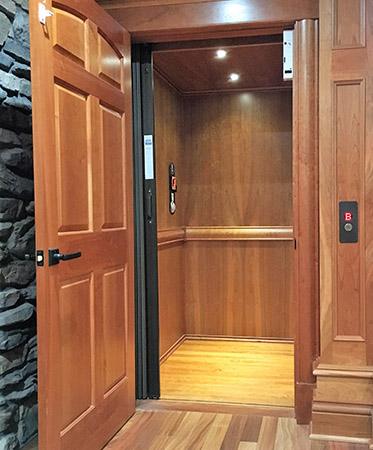Residential Cargo Lifts - 5 Key Terms To KnowPosted by Fitzgerald Harrell on May 24th, 2021 A few words employed in the cargo lift industry are everyday terms that you are probably already acquainted with, however some terms you can see for residential usage are less known or have special considerations. Let's discover the 5 terms you're likely to see when looking for and researching lift equipment made for used in and around your own home or property. check this link right here now of Residential Cargo Lift Terms Mast Technology: The mast comprises the structural support of the lift. Just like a flagpole mast, or sail mast, its function is usually to provide stability. There are 5 different amounts of mast support. For a residential lift, dual masts are preferred. look here contains two masts and offer more support than the usual single mast rig would. The mast(s) might be configured using the cargo cage in a number of methods to accommodate the things being lifted. Good materials to consider in residential lifts are aluminum and stainless steel because they're stronger and resist environmental changes. Cargo Cage: This is the area of the lift that is certainly meant to hold your stuff (the cargo). Another common term just for this can be a carriage. Anti-skid flooring is exceedingly vital in the residential lift. The materials accustomed to prevent skidding won't keep the precious cargo from slipping from the cargo cage, and can also protect your household items from being scratched or damaged as you go along. Rotary Limit Switch: Nearly all varieties of heavy-lifting equipment which rotate or move up and down utilize something called a rotary limit switch. In a residential lift, you need the rotary limit exchange signal of do not just move the cargo cage down and up, though. The lift switch should give you the ability to smoothly control the stops, so stuff for the house (or individuals!) are certainly not jostled around or damaged during transport. Winders: The winders would be the mechanism within the lift that controls the cables. All residential lifts will vary, and so the number of winders in place can vary with respect to the manufacturer's specifications. When moving residential items (furniture, boats, or medical supplies for those with special needs) heavy-duty cables are widely-used (for example aircraft cables that are manufactured from stainless-steel), so dual winders are preferred. Lifting Capacity: Not surprisingly, the lifting capacity refers to the weight that might be backed up by the mast, cargo cage, rotary switch and winders. my website for residential lifts is 1,000 pounds (or 450 kilograms).
There are a variety of other residential cargo lifting terms, however the ones stated previously are some of the mostly used. When installing a good start at your home or property, it's pretty safe to visualize that you will come upon them. If you go to a vendor's site and don't see these terms, make sure you question them.
Since residential lifts are designed to transport more valuable "cargo" than commercial lifts, it really is helpful if you understand some of the subtle differences between terms used for each purpose.
Lifting Capacity: Not surprisingly, the lifting capacity refers to the weight that might be backed up by the mast, cargo cage, rotary switch and winders. my website for residential lifts is 1,000 pounds (or 450 kilograms).
There are a variety of other residential cargo lifting terms, however the ones stated previously are some of the mostly used. When installing a good start at your home or property, it's pretty safe to visualize that you will come upon them. If you go to a vendor's site and don't see these terms, make sure you question them.
Since residential lifts are designed to transport more valuable "cargo" than commercial lifts, it really is helpful if you understand some of the subtle differences between terms used for each purpose.
Like it? Share it!More by this author |


